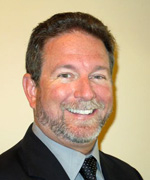No-show patients are an annoying and costly problem for practices, but one community-based health center in Long Island, New York, is making headway.

The Elmont Teaching Health Center, a federally qualified health center, cut its patient no-shows by 34%. That’s significant given that missed appointments cost up to 14% of anticipated daily revenue at clinics and can also result in longer wait times and can hurt care quality, health outcomes and patient satisfaction.
The steps that Elmont took to reduce the number of no-show patients can help other practices or even other businesses that are hurt when customers don’t show up for appointments, Peter A. Guiney, D.O., one of the center’s doctors, said in an interview with FierceHealthcare.
“We felt if it works here, it can work anywhere,” said Guiney, who is chairman of the department of family medicine at Nassau University Medical Center and also serves as director of the family medicine residency program that places osteopathic residents at Elmont.
Elmont is one of five health centers that make up the Long Island Federally Qualified Health Centers group. Many of its patients are poor, some struggle with language barriers and many are noncompliant when it comes to their healthcare, Guiney said.
Elmont decided to tackle the no-show problem and reported the results in a study published in The Journal of the American Osteopathic Association.
Assessing the no-show problem
When it comes to excuses, Guiney said Elmont doctors and staff have heard it all. Located across from Belmont Park, the famous horse racing track, some patients have said they didn't show up for their appointment because they hit it big at the track and wanted to celebrate.

Among the more mundane excuses: they didn’t have a phone to call the clinic and cancel, they didn’t have a ride to their appointment or they just didn't like that day's weather.
But physicians and staff at Elmont went beyond the anecdotal and surveyed patients to understand why no-shows occurred so they could tailor their interventions.
They found no-shows fell into three categories:
- Patients who simply forgot their appointment.
- Patients who had a work conflict.
- Patients who couldn't reach anyone at the center or couldn't leave a voicemail to cancel.
Those no-shows are a perennial problem for clinics and practices. Studies have found no-show rates in outpatient settings range between 23.1% and 33.6% and result in decreased efficiency, lost time and higher use of resources.
While some see it as the cost of doing business, Elmont wanted to look at factors that could cut the no-show rate, said the study’s lead author Ashwin Mehra, M.D., a clinical psychologist at the center, who also works at Nassau University Medical Center.
Like other federally qualified health centers, Elmont cares for many patients with chronic health conditions and when patients don’t show up for appointments, it can have serious consequences for their health, Guiney said.
While there were many factors in patients’ individual lives that contributed to no-show rates, the clinic looked for improvements they could make in the organization. The goal was to design an intervention to address every roadblock that kept a patient from receiving healthcare.
Here are four interventions that worked at Elmont and that other clinics and practices can adopt:
1. Educate patients on the importance of showing up for appointments
From a clinical standpoint, patients who keep their appointments tend to do better. For example, clinicians talked to diabetic patients about the importance of coming in to get their sugar levels checked and the consequences of neglecting their health, such as the possibility of amputated toes or loss of eyesight, Guiney said.
Additionally, patients were reminded how to properly cancel or reschedule an appointment at virtually every point of contact, he said.
The information was included in reminder phone calls made one day prior to the scheduled appointment, in multi-lingual signs at the clinic, in one-on-one conversations during appointments and in phone calls following a no-show.
The practice manager and front desk staff verified each patient received a reminder call. Staff used a script that made it clear to patients how to cancel or reschedule appointments. Family medicine residents contacted no-show patients within two days of missed appointments to talk to them about rescheduling.

2. Prioritize patient accessibility and answer every incoming call
Guiney said he knew there was a communication problem because at times he couldn’t get through to the center himself.
A patient trying to call from a pay phone would have an even more difficult time. One solution: incoming calls now ring on all front desk phones and all staff are encouraged to answer any phone, even it’s not at their assigned space. Rather than an automated system, Elmont makes sure a person answers the phone.
"We felt given the stakes we need to have a dedicated person that just picks up the phone and directs the call,” Guiney said.
3. Increase internal awareness and attention
It was important to create a heightened awareness about the no-show problem and get buy-in from everyone, Mehra said.
At Elmont, they sent out a weekly report on no-show rates to all healthcare professional and office staff. The reports kept the issue in people’s minds and celebrated successes when no-show rates declined.
Everyone, from the receptionist at the front desk to the residents and specialty providers, knew it was their job to be part of the solution, Mehra said.
4. Adopt specialized, flexible approaches for each medical specialty
Different specialties have different challenges. For example, behavioral health providers have patients with more unplanned, crisis-oriented needs. Those providers allowed more direct contact with patients and when no-show patients created gap in the schedule, they used those openings to accommodate patients in crisis who needed immediate appointments.
“I think 100% this is something that people can use. What we found and the tools we created can help a practice reduce no-shows,” Guiney said. “From a business point of view and a healthcare point of view, the interventions help both.”
The list of interventions can be implemented at almost zero cost to practices and clinics, he said.
“They seem pretty commonsense. When all of them came into play we really got excited about moving the needle. The beauty of this particular intervention is its simplicity.”
The initial implementation period ran from October to December 2015. Subsequent analysis showed no-show rates for that time were 15.3%, down from 18.2% in the previous quarter.